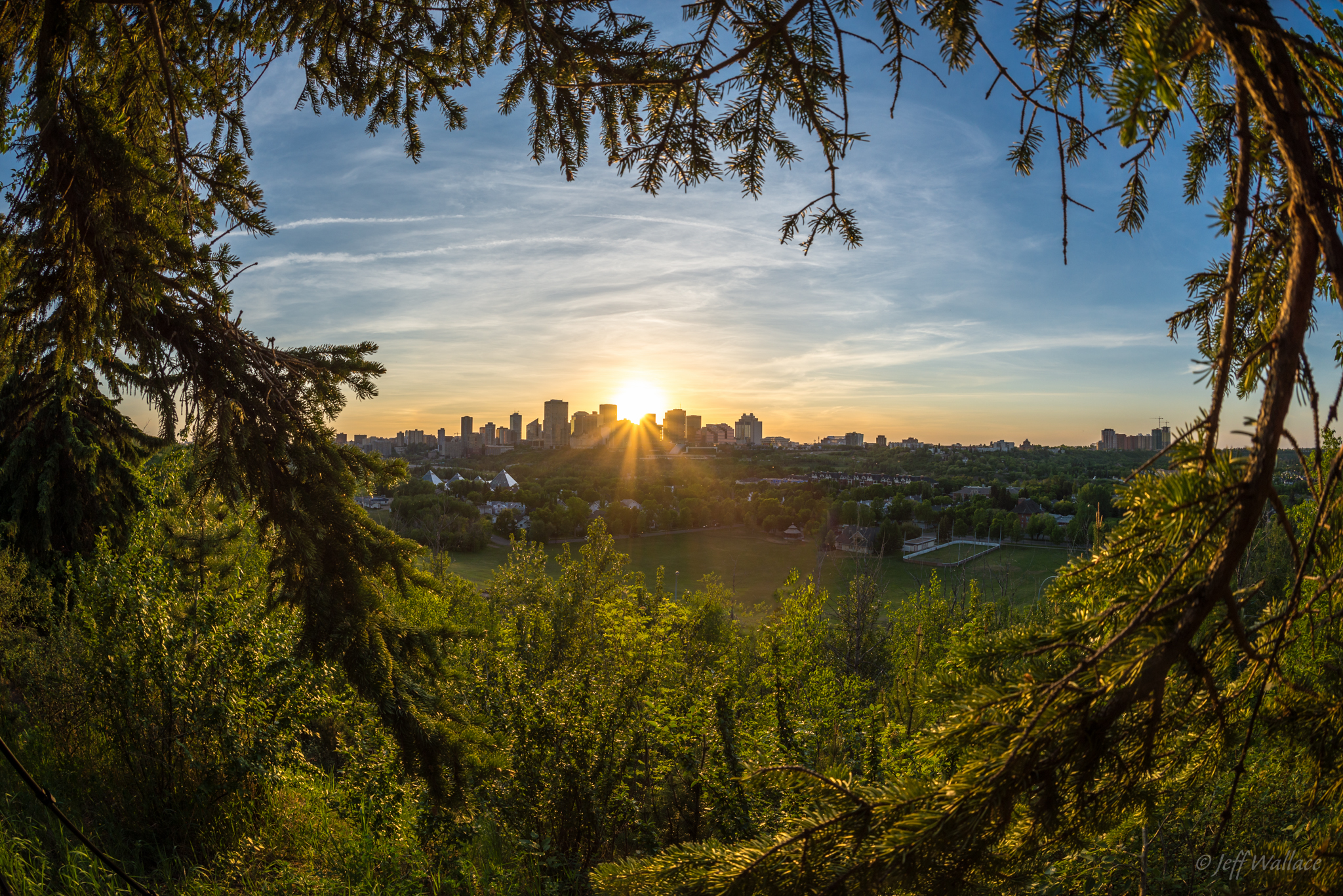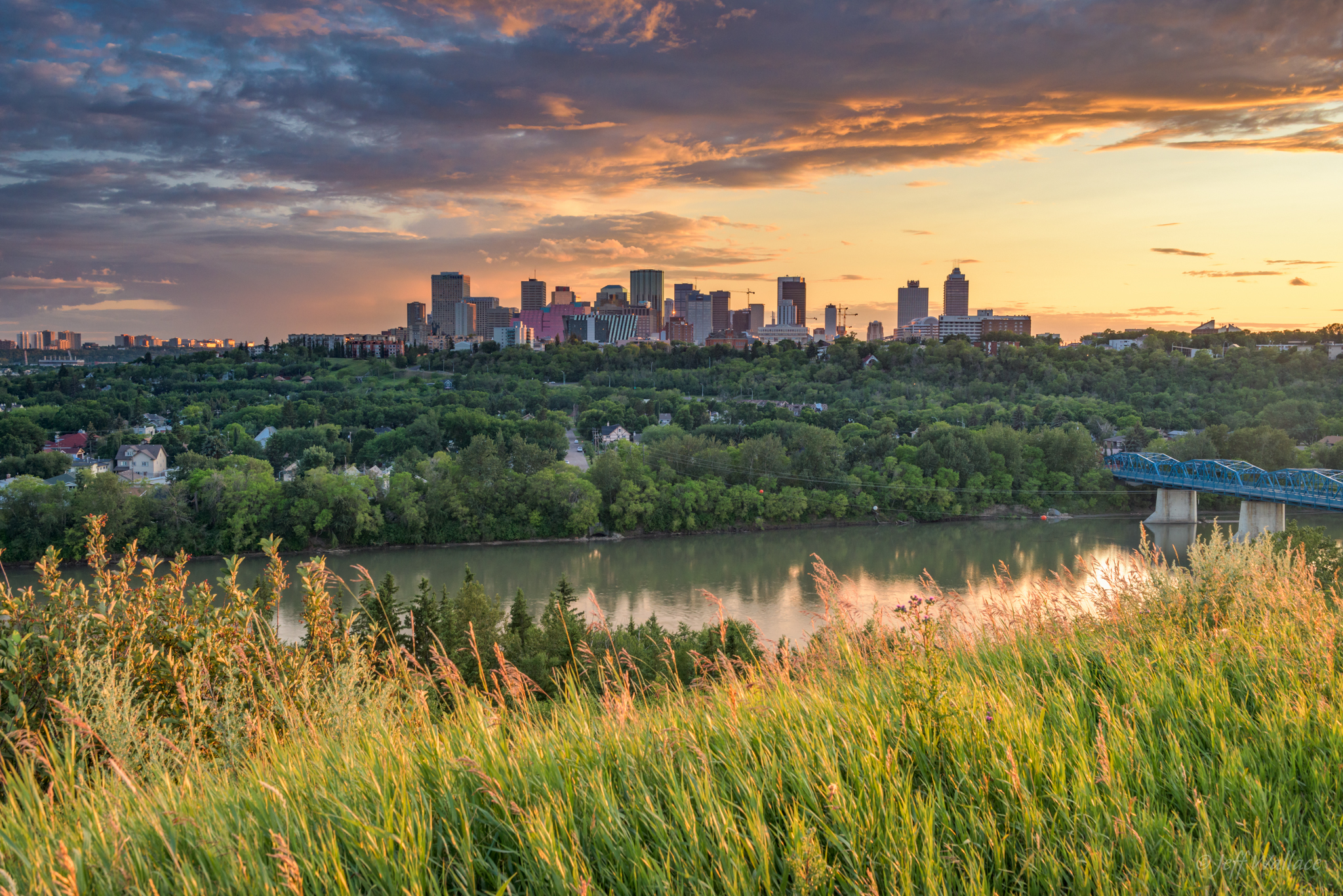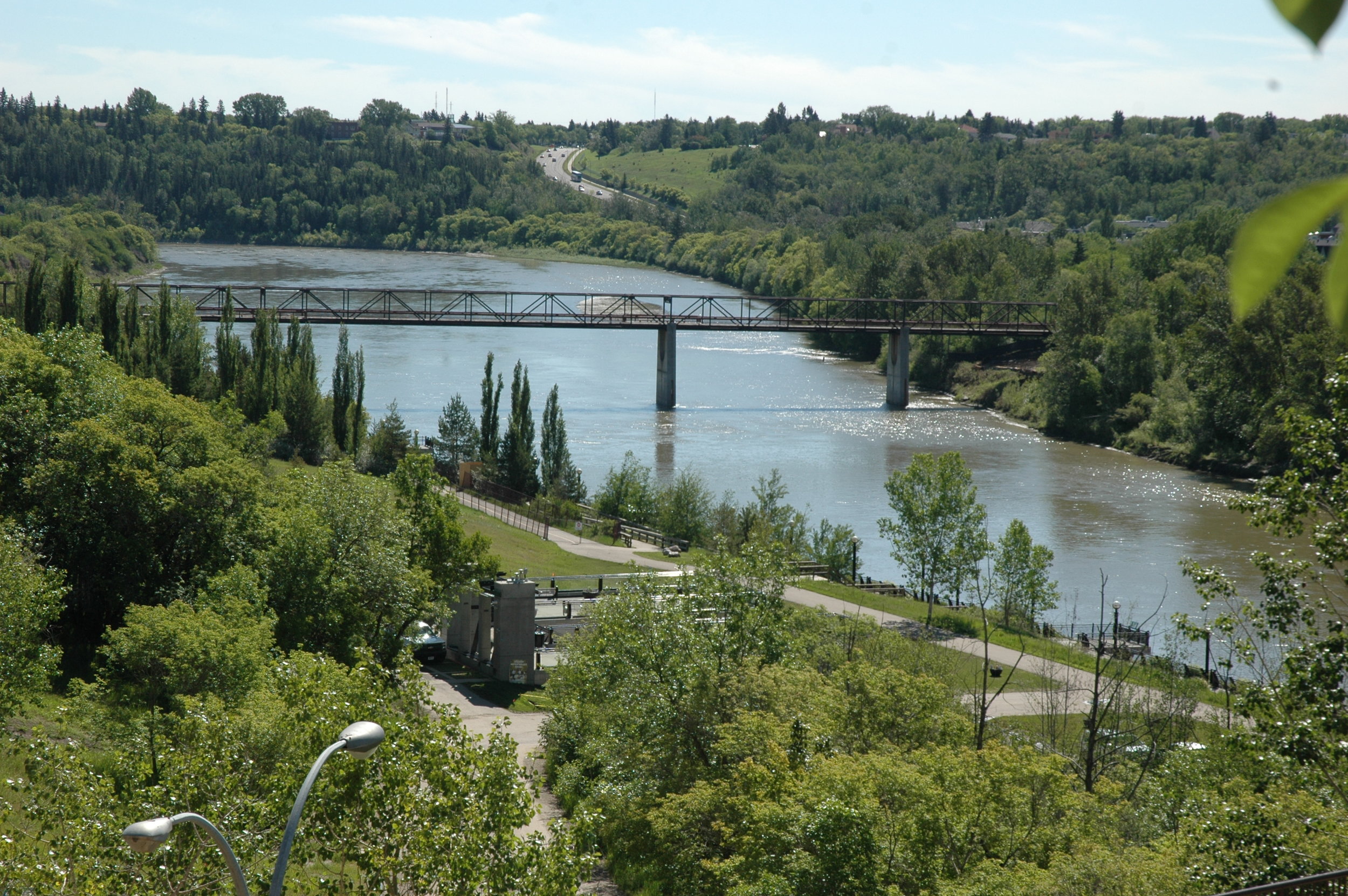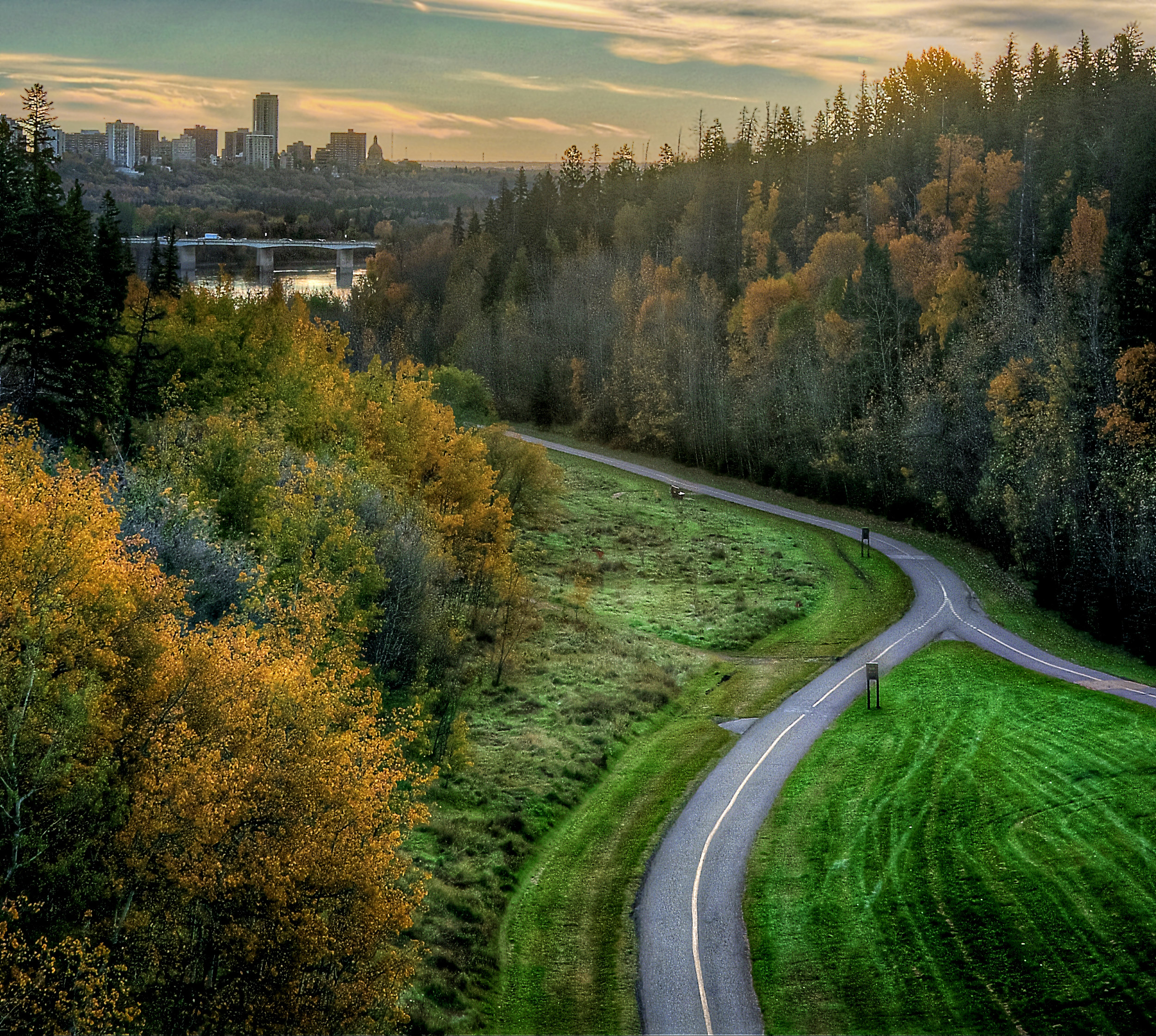edmonton, canada
Biophilic Cities Member since 2016
“Conservation of nature is central to the design and planning of our city as we create opportunities for our citizens to learn about, celebrate and connect with nature.” - City Councilor Ben Henderson
Edmonton is a city that can be proud of its abundant wildlife and biodiversity. Edmonton is unique among cities as a leader working toward a more connected network of habitats and green areas, where the different animals that co-inhabit the city can move and travel without the danger of cars. The city has been implementing this vision through the design and installation of wildlife passages. At its beginnings, landscape architect Frederick C. Todd envisioned a river valley park system that would create an ecological network linking the city’s mature forests and making them accessible for residents to experience nature as part of their daily lives. This early vision saw its realization in the River Valley Parks, which link urban parks along the North Saskatchewan River and twenty-seven connecting ravines through the heart of the city. At 18,000 acres in size and covering thirty miles, it is the largest municipally owned park in Canada. The city has continued this legacy through a variety of complementary planning efforts aimed at conserving and promoting the city’s urban ecology.
City Contacts:
Suzanne Young, Director, Open Space Planning and Design
Catherine Shier, Principal Ecological Planner
PROJECT SPOTLIGHTS
Breathe is a transformative strategy to make sure that as the city grows, each neighbourhood will be supported by a network of open space for the next 30 years. The main goal of the Green Network Strategy is to plan and sustain a healthy city by encouraging connection and integration of open space at the site, neighbourhood, city and regional levels.
Natural Connections Strategic Plan is Edmonton’s plan for the protection, management and restoration of local natural areas and biodiversity, and the engagement of the community in that effort. The plan applies an outcome-based, ecological network approach to the conservation of Edmonton’s natural areas systems.
The City Plan is the City of Edmonton's Municipal Development Plan, which commits to a Big City Move of "Greener as We Grow." Greener As We Grow puts Edmontonians at the forefront of two important trends for our region—continuing to develop a healthy city while also paying attention to what will surely be one of the great challenges of our future: protecting and enhancing our land, air, water and biodiversity.
As the largest urban park in Canada, with more than 160 kilometres of maintained pathways and 20 major parks, the River Valley is a natural wonder for all Edmontonians to be proud of. The parks, trails and attraction facilities in the River Valley offer Edmontonians unparalleled opportunities to connect to nature, get outside and play.
WinterCity Strategy establishing Edmonton as a global leader in engaging residents to reclaim the outdoors during the winter months.
LOCAL NEWS
Continuing a Legacy of Conserving and Connecting Ecological Landscapes, Edmonton Joins the Biophilic Cities Network
Summer 2016 is proving to be a fruitful time for Edmonton and its continuing dedication to embracing its urban ecological landscapes. Beginning with Environment Week Edmonton, the summer has seen the kickoff of Breathe: Edmonton’s Green Network Strategy that looks to broaden where and how Edmonton residents and visitors experience nature and wildlife within the boundaries of the city. Associated events include an open-space Twitter scavenger hunt where participants will scour the city in response to weekly questions. This imaginative event coincides with the city’s implementation of a citizen survey on the future of Edmonton’s integrated open-spaces.












